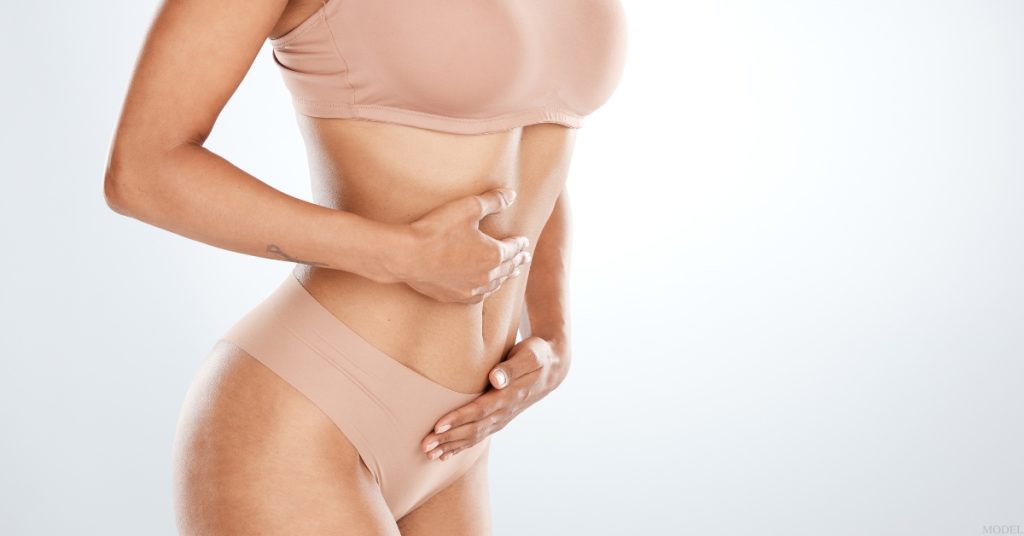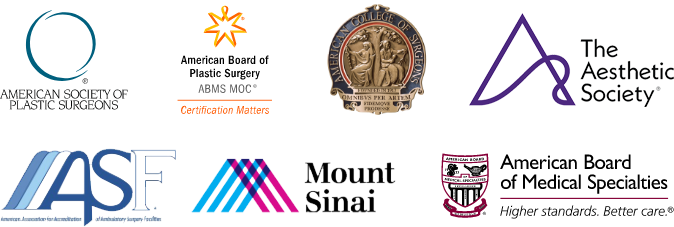Many women who visit my NYC practice want a flatter abdomen after having children. A common worry is whether a tummy tuck will create a second scar above the existing C-section scar. Thankfully, that isn’t the case. A properly performed tummy tuck not only flattens the abdomen but also removes the old C-section scar entirely, leaving you with a single, carefully placed incision.
How a Tummy Tuck Eliminates C-Section Scars
During abdominoplasty, I place the incision low across the lower abdomen—below most C-section scars. Then I remove the excess skin and the entire original scar, tightening the abdominal wall and re-draping the remaining skin. Here’s what to expect:
- Incision placement: The tummy tuck incision usually runs from hip to hip along the bikini line. Because it’s lower than your Csection scar, the old scar comes off with the loose skin.
- Scar length & appearance: The new scar is longer than a typical C-section scar but thinner and more carefully closed. I use internal sutures instead of staples to promote a neat, flat scar.
- Healing & scar care: Like any surgical incision, the scar initially appears red and raised but softens and fades over time. Scars typically start turning from red to pink within 6 to 12 months. Proper care—including silicone gels, compression garments, and sun protection—helps ensure the scar heals as a fine line. For more tips on scar placement and care, see our post on tummy tuck scar control.
By removing the old C-section scar and replacing it with a lower, more refined incision, a tummy tuck not only smooths the abdomen but also leaves you with a scar that’s easier to conceal and care for long term.
Visual Examples & Confidence
Seeing real results can boost your confidence in the process. I encourage you to browse our before-and-after tummy tuck gallery, where you’ll find examples of C-section scars completely removed during tummy tucks. These photos demonstrate how the new incision sits lower on the abdomen and fades over time.
Deciding Whether a Tummy Tuck Is Right for You
If you’re considering a tummy tuck for both cosmetic reasons and removal of a C-section scar, keep these points in mind:
- Skin laxity and muscle separation: A tummy tuck is ideal if you have loose skin, stubborn fat, or muscle separation (diastasis recti) from pregnancy.
- Recovery commitment: Expect to take 2–3 weeks off from work and full activities to allow proper healing.
- Board-certified surgeon: Choose a surgeon experienced in body contouring to ensure the incision is placed and closed in a way that produces the best cosmetic outcome.
Weighing these factors carefully will help you determine if a tummy tuck is the right step, and consulting with a board-certified plastic surgeon can give you personalized guidance for your goals.
A Single Scar, A Flatter Abdomen
Abdominoplasty doesn’t leave you with two scars—it replaces your C-section scar with a carefully placed tummy tuck incision, helping you achieve a smoother, flatter belly. Explore more before and after photos in our gallery and read about tummy tuck scar control to see how we manage scar placement and healing. If you’re ready to discuss your options, contact us online or call to schedule a consultation.
I hope this helps clear the issue for anyone thinking about getting a flatter tummy. For inspiration, visit my online gallery of before and after tummy tuck photos. If you have questions, I invite you to request a consultation using the online form or call us at (212) 249-4020.
This blog post was originally written in March 2011 and updated in April 2025.





Ok doctor am ready to get it down
okay then, why don’t we start by having you send some photographs of your particular situation? The email is [email protected].
I will have a look and get back to you.
How much would it be?? Do you make payments plans??
I never speak about money – sorry. If you reach out to our office at [email protected] they will give you an idea what to expect.
Hoping we get to meet soon!